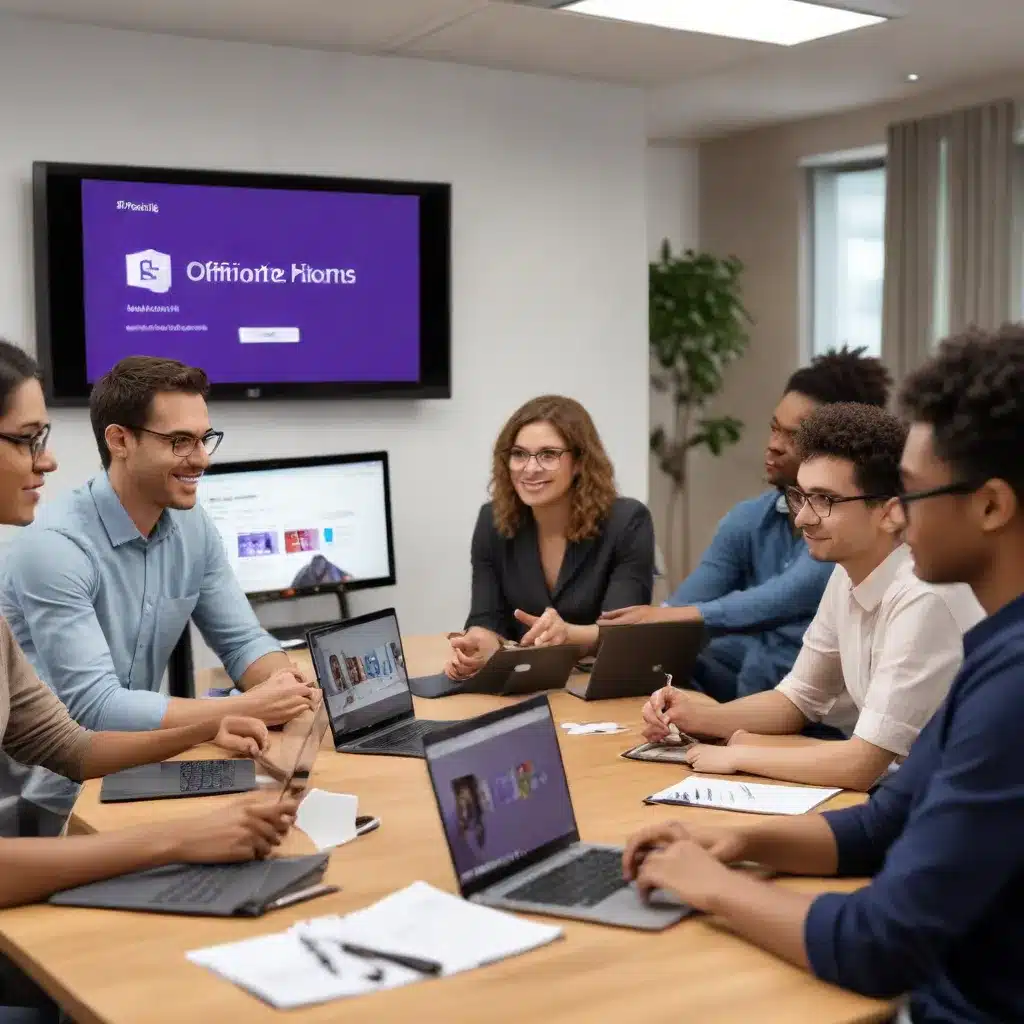
Harnessing the Power of Breakout Rooms for Dynamic Team Interactions
In today’s rapidly evolving digital landscape, where remote and hybrid work models have become the norm, fostering meaningful collaboration and engagement among teams has never been more crucial. Microsoft Teams, the leading communication and collaboration platform, offers a versatile tool to help organizations overcome this challenge: Breakout Rooms.
Breakout Rooms in Microsoft Teams grant educators, trainers, and business leaders the flexibility to divide their virtual meetings into smaller, more focused groups. This functionality promotes a dynamic and engaging experience that cultivates active participation, idea-sharing, and problem-solving among participants. Whether you’re facilitating group projects, brainstorming sessions, or collaborative discussions, Breakout Rooms can elevate the quality of your team interactions and drive deeper learning or problem-solving.
In this comprehensive guide, we will explore the features, benefits, and best practices of using Microsoft Teams Breakout Rooms to optimize your team’s collaboration and productivity. We will delve into the process of creating, managing, and moderating breakout rooms, providing you with practical strategies and use cases to elevate your team’s engagement and foster a more dynamic virtual meeting environment.
Setting Up and Managing Breakout Rooms in Microsoft Teams
Microsoft Teams offers a user-friendly interface to efficiently create and manage breakout rooms, ensuring a seamless and productive collaborative experience for your team. Here’s a step-by-step guide to get you started:
-
Initiate Breakout Rooms: During a Microsoft Teams meeting, click the “Breakout Rooms” icon in the control bar. Select the number of rooms you would like to create and choose between “Automatically” or “Manually” assigning participants.
-
Room Customization: Adjust the settings of each breakout room by renaming them to reflect the activity, purpose, or group name. This will help in efficiently managing and navigating between groups.
-
Participant Management: To assign, move, or swap participants, click the “Participants” tab within a room, and select the appropriate option. Participants can also request assistance, allowing you to monitor and support the group dynamics proactively.
-
Monitor and Manage: Actively supervise and engage with each room by joining or moving between rooms as needed. Provide real-time feedback, address questions, and facilitate discussions across groups.
-
Close and Reconvene: When the group activity or discussion concludes, close the breakout rooms to reconvene the entire class in the main meeting. Participants can then share their findings, insights, and experiences with the rest of the team.
Best Practices for Facilitating Breakout Room Interactions
Effective facilitation and moderation of Microsoft Teams Breakout Rooms are crucial in maintaining a positive, structured, and engaging collaborative experience. Consider incorporating these best practices during your Breakout Rooms sessions:
-
Clear Objectives: Clearly articulate the goals, expectations, and purpose of the breakout room activities. Provide participants with concrete guidelines and prompts to guide their discussions and collaboration.
-
Timed Activities: Set a specific time limit for each breakout room activity to encourage focus, productivity, and active participation. Share a visible timer or periodic time reminders to maintain momentum and stay on schedule.
-
Group Dynamics: Consider the composition of each group, and facilitate balanced interactions that encourage equal participation, diverse perspectives, and positive group dynamics.
-
Digital Collaboration Tools: Integrate digital tools such as shared documents, whiteboards, or in-app video recording to support brainstorming, problem-solving, and project development within Breakout Rooms.
By following these best practices, you can ensure that your Breakout Room sessions are well-structured, engaging, and conducive to meaningful collaboration among your team members.
Leveraging Breakout Rooms for Dynamic Learning and Collaboration
Harness the power and flexibility of Microsoft Teams Breakout Rooms by implementing a variety of activities and discussion prompts that foster collaboration, communication, and deep learning. Explore these use cases that can be adapted to your specific needs and objectives:
-
Small Group Discussions: Use Breakout Rooms to explore essential questions, debate topics, or analyze texts. Encourage participants to share their interpretations, critique arguments, and refine their understanding with peer feedback.
-
Collaborative Projects: Breakout Rooms provide participants with a dedicated space to collaborate on group projects, from research presentations to multimedia creations. Facilitate active collaboration through task delegation, idea-sharing, and progress monitoring.
-
Peer Assessment: Assign participants into pairs or small groups to review and provide constructive feedback on each other’s work. Breakout Rooms facilitate engaging peer assessment sessions by creating an intimate, collaborative atmosphere.
-
Simulations and Role-Plays: Create dynamic learning experiences by using Breakout Rooms for role-playing or simulations. Encourage participants to immerse themselves in various scenarios, exploring solutions and challenges in real-time.
-
Brainstorming Sessions: Achieve creative problem-solving by assigning participants to Breakout Rooms to brainstorm ideas, reflect on potential solutions, and evaluate the feasibility of different approaches.
By integrating Microsoft Teams Breakout Rooms into your virtual meetings and collaborative activities, you can unlock the full potential of your team’s creativity, problem-solving skills, and collective knowledge. Check out the IT Fix blog for more insights on leveraging technology to drive team productivity and engagement.
Conclusion: Embracing the Future of Collaborative Learning and Teamwork
By integrating Microsoft Teams Breakout Rooms into our virtual meetings and collaborative activities, we can create an engaging, participant-centered environment that fosters active participation, idea-sharing, and collective problem-solving. Well-facilitated Breakout Room sessions have the potential to truly enrich our team’s learning experiences and empower participants to take charge of their own professional development.
As we navigate the evolving landscape of remote and hybrid work, let us continue to explore and embrace the transformative power of innovative collaboration tools like Microsoft Teams. By blending the art of facilitation with the versatility of technology, we can inspire a future of confident, engaged, and high-performing teams, equipped with the essential skills to thrive in our ever-evolving digital world.












